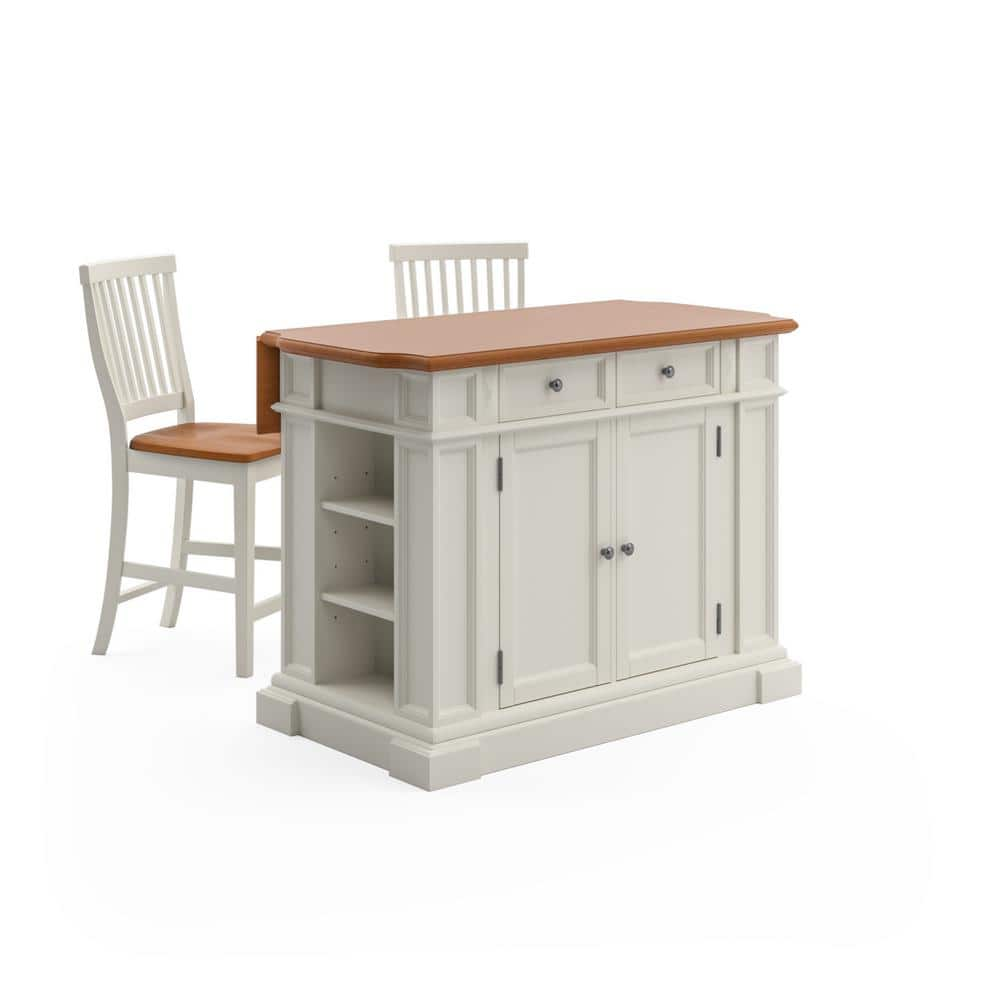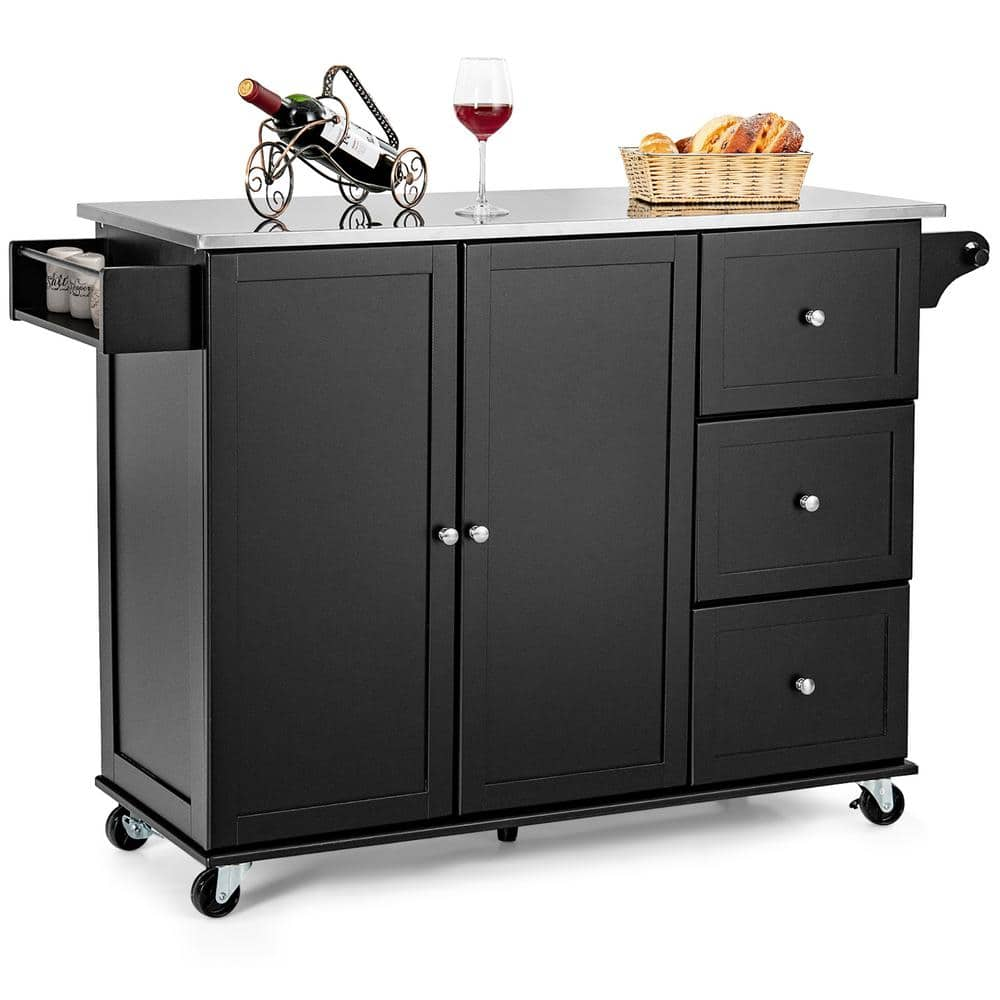HOMCOM Rolling Black Kitchen Island Cart on Wheels with Rubber Wood Top, Spice Rack, Towel Rack and Drawers for Dining Room
Water-resistant tabletop ensures easy maintenance. Made of f P2 MDF and P2 particleboard for durable use. Includes 4 caster wheels to provide easy mobility.
Looking to maximize your kitchen space. This kitchen island features a simple modern design and can be fit into various styles of decorations. Comes with 2 easy-glide drawers, 2 concealed cabinets, a towel bar, and a spice rack. This kitchen island cart has a compact design and great storage capabilities, it will give you a perfect user experience. Upgrade your kitchen today with our HOMCOM rolling kitchen island cart.
- Simple modern design, fit into kitchen and dining room
- 2 easy-glide drawers, 2 concealed cabinets, a towel bar, and a spice rack provide ample storage
- 2-cabinets are equipped with an adjustable shelf for flexible storage solution
- Made of solid f P2 MDF and P2 particleboard for long-lasting use and easy cleaning
- Varnished rubberwood tabletop is water-resistant and easy to clean
- 4 smooth-rolling kitchen cart casters with 2 locking brakes provide mobility and stability
- Assembly required
Additional information
| Dimensions | H 32.5 in, W 43.75 in, D 17.5 in |
|---|---|
| Depth | Narrow (Under 21 in.) |
| Width | Standard (40-55 in.) |
| Manufacturer Warranty | 1 year limited |






by Lorie
I love it- but gosh it took forever to put together- the instructions were easy to follow but took me about 6 hours
by Dizzy
A pain to put together so plan to be doing it for acouple hours, abit pricey for what it is but not a bad buy. It looks nice.
by Jen
It was time consuming but easy to assemble. The instructions were pretty clear. It feels nice and sturdy. We’re happy with it.
by Amy
Let me start out with saying the bad, I swear it was like 1000 pieces! My husband who is a pretty good handyman found the island a pain to put together. But once he did the end result was exactly what I was wanting. A kitchen island that wasn’t to large but just right for extra cutting and food prep space.
by Anthony
Great. Holds many things. Toaster used on top. Many things that don’t fit on counter top or in cabinets now have a convenient place.
by Andrea
I liked the product, put together well, well designed and it fit or needs.
by Roger
Surprising quantity. Bur be aware that you need to be very handy to assemble it properly. Holes needed to be drilled and workarounds for screw and screw hole issues were a bit challenging. But all done and looks great. Assembly about 8 hours.
by Chelle
I bought for extra storage for my mixer and some utensils so it’s perfect for what I need.